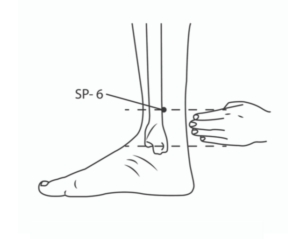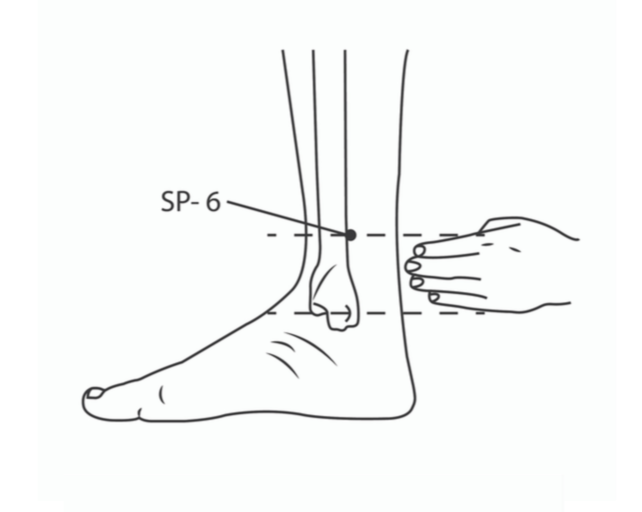Everyone experiences their menstrual cycle differently, but the majority have similar symptoms, and symptoms may vary month to month.
Menstrual Cramps and you
Like most women, you could have experienced menstrual cramps at some point in your life. If you have never experienced cramps, then count yourself the lucky few!
Dull pain that feels like tightening around the lower abdomen before or during menstrual periods is also known as dysmenorrhea. The pain sometimes radiates to the low back or thigh area. Other symptoms may include headache, nausea, loose stools, sweating, and dizziness.
Want to know what causes this pain?
Blame it on the hormones! Prostaglandins, a hormone-like substance, are produced naturally in the body and are thought to cause these menstrual cramps and be responsible for the pain and inflammation.
In Biomedicine, there are two types of menstrual cramps: primary and secondary dysmenorrhea.
Primary dysmenorrhea, which usually starts within several years after your first menstrual period, involves no physical abnormality.
Secondary dysmenorrhea, on the other hand, has an underlying physical cause, such as endometriosis, pelvic inflammatory disease, uterine fibroids, or uterine polyps.
Natural Remedies for Menstrual Cramps
Although natural remedies show some promise, more research is needed and a wider study pool. If you’re experiencing symptoms of menstrual cramps, it's important to see your physician to be properly diagnosed.
Here are my top 3 natural approaches for reducing cramps for your menstrual period.
- Acupressure / Acupuncture
I love Acupressure! Not only do I use it in my office (I’m a licensed acupuncturist), but it’s a traditional healing practice that is based on the same principles as acupuncture. Instead of applying needles to acupuncture points, the pressure is applied. A point that is often I highly recommend for menstrual cramps is called Spleen 6.

To find the point, start from the bony point of the inner ankle.
From that point, draw an imaginary line up the lower calf from the inner ankle. The point is approximately four finger widths from the inner ankle. It isn’t on the shin bone, but beside it, towards the back of the calf.
With your thumb or middle finger at a 90-degree angle to the skin, apply gradually increasing pressure. Hold for 1-3 minutes.
The pressure should not be painful or uncomfortable. Acupressure to the Spleen 6 point should not be done if you are pregnant, nor over broken or infected skin.
- Omega-3 Fatty Acids
Found in fish such as salmon, mackerel, sardines, and anchovies, they are also available in fish oil capsules. I like capsules as most brands filter out any pollutants in fish, such as mercury and PCBs. Also, they taste better. Fishy taste in your mouth – No thanks!
Studies
At least eight studies involving a total of 1,097 women have investigated the relationship between diet and menstrual cramps and have found that fish oil intake seemed to have a positive effect on menstrual cramps. Animal studies suggest that the two compounds in fish oil, eicosapentaenoic acid (EPA) and docosahexaenoic acid (DHA) may decrease prostaglandin levels.
You can find them in drug stores, health food stores, and online. Look for the active ingredients EPA and DHA on the label. If you’re on blood-thinning drugs such as warfarin (Coumadin) and aspirin, skip these as they will interact and cause nausea and vomiting.
- Magnesium
Found naturally in foods such as green leafy vegetables, nuts, seeds, and whole grains, it can also be consumed in nutritional supplements. What the heck does Magnesium do?
It’s needed for more than 300 biochemical reactions. It helps to regulate blood sugar levels and is needed for normal muscle and nerve function, heart rhythm, immune function, blood pressure, and bone health.
Studies
Three small studies carried out in 2001 by researchers with the Cochrane Collaboration reviewed compared magnesium with placebo for dysmenorrhea. In summary, they found magnesium was more effective than a placebo for pain relief and the need for additional medication was less with magnesium use.
In the studies, there was no significant difference in the number of side effects or adverse effects between the magnesium and the placebo.
All good things in small doses. The same goes for taking any supplements. High doses of magnesium may cause diarrhea, nausea, loss of appetite, muscle weakness, difficulty breathing, low blood pressure, irregular heart rate, and confusion.
Stay away if taking certain medications for osteoporosis, high blood pressure (calcium channel blockers), as well as some antibiotics, muscle relaxants, and diuretics.
Other Natural Remedies for Menstrual Cramps
Other natural supplements that have shown some positive effects include Vitamin E, B1, and calcium. For lifestyle and self-care, studies have shown acupuncture and massage can ease symptoms. Also, Teas like fennel and cramp bark also ease the pain. The use of warm packs, exercise, and yoga can help to improve circulation and ease cramping.
If you're considering the use of any form of alternative medicine, talk with your primary care provider. Self-treating a condition and avoiding or delaying standard care may have risky consequences.
As always,
Sending you peace and long life,
Siatnee Chong
